-
 The Ballad of Reading Gaol, Oscar Wilde, Latimer J. Wilson illus. (F.M. Buckles & Company, New York, 1907) 6.5”x9.75″, 55pp, grey/violet cloth with gilt and black and white decorations and titles, top-edge gilt others deckled, corners bumped, binding and internal pages are in excellent condition. The Ballad of Reading Gaol is a poem by Oscar Wilde, written in exile in Berneval-le-Grand, after his release from Reading Gaol on 19 May 1897. Wilde had been incarcerated in Reading after being convicted of gross indecency with other men in 1895 and sentenced to two years' hard labour in prison. During his imprisonment, a hanging took place. Charles Thomas Wooldridge had been a trooper in the Royal Horse Guards. He was convicted of cutting the throat of his wife earlier that year at Clewer, near Windsor. He was aged 30 when executed. Wilde wrote the poem in mid-1897 while staying with Robert Ross in Berneval-le-Grand. The poem narrates the execution of Wooldridge; it moves from an objective storytelling to symbolic identification with the prisoners as a whole. No attempt is made to assess the justice of the laws which convicted them, but rather the poem highlights the brutalization of the punishment that all convicts share. Wilde juxtaposes the executed man and himself with the line "Yet each man kills the thing he loves". Wilde too was separated from his wife and sons. He adopted the proletarian ballad form, and suggested it be published in Reynold's Magazine, "because it circulates widely among the criminal classes – to which I now belong – for once I will be read by my peers – a new experience for me". The finished poem was published by Leonard Smithers in 1898 under the name "C.3.3.", which stood for cell block C, landing 3, cell 3. This ensured that Wilde's name – by then notorious – did not appear on the poem's front cover. It was not commonly known, until the 7th printing in June 1899, that C.3.3. was actually Wilde. The poem brought him a small income for the rest of his life. This edition, beautifully decorated by Latimer J. Wilson and published by F.M. Buckles & Company appears to be a very rare. There are no other copies of this edition currently on sale. I have found a few in private collections and libraries using WorldCat database but no copies appear to be in circulation.
The Ballad of Reading Gaol, Oscar Wilde, Latimer J. Wilson illus. (F.M. Buckles & Company, New York, 1907) 6.5”x9.75″, 55pp, grey/violet cloth with gilt and black and white decorations and titles, top-edge gilt others deckled, corners bumped, binding and internal pages are in excellent condition. The Ballad of Reading Gaol is a poem by Oscar Wilde, written in exile in Berneval-le-Grand, after his release from Reading Gaol on 19 May 1897. Wilde had been incarcerated in Reading after being convicted of gross indecency with other men in 1895 and sentenced to two years' hard labour in prison. During his imprisonment, a hanging took place. Charles Thomas Wooldridge had been a trooper in the Royal Horse Guards. He was convicted of cutting the throat of his wife earlier that year at Clewer, near Windsor. He was aged 30 when executed. Wilde wrote the poem in mid-1897 while staying with Robert Ross in Berneval-le-Grand. The poem narrates the execution of Wooldridge; it moves from an objective storytelling to symbolic identification with the prisoners as a whole. No attempt is made to assess the justice of the laws which convicted them, but rather the poem highlights the brutalization of the punishment that all convicts share. Wilde juxtaposes the executed man and himself with the line "Yet each man kills the thing he loves". Wilde too was separated from his wife and sons. He adopted the proletarian ballad form, and suggested it be published in Reynold's Magazine, "because it circulates widely among the criminal classes – to which I now belong – for once I will be read by my peers – a new experience for me". The finished poem was published by Leonard Smithers in 1898 under the name "C.3.3.", which stood for cell block C, landing 3, cell 3. This ensured that Wilde's name – by then notorious – did not appear on the poem's front cover. It was not commonly known, until the 7th printing in June 1899, that C.3.3. was actually Wilde. The poem brought him a small income for the rest of his life. This edition, beautifully decorated by Latimer J. Wilson and published by F.M. Buckles & Company appears to be a very rare. There are no other copies of this edition currently on sale. I have found a few in private collections and libraries using WorldCat database but no copies appear to be in circulation. -
 The Life and Adventures of Father Silas | written by himself and now first translated from the original French edition (dated 1742), anonymous [attributed to Jean-Charles Gervaise de Latouche], (np [Charles Hirsch?], London, 1907) 7" X 4.5", 185pp, beautifully bound full red morocco with gilt border on boards, gilt decorations and title on spine, 5 raised bands, deckled edges, illustrations not present, good+ condition, slight internal foxing, a beautiful copy of a rare book. Originally published in French, Histoire de Dom Bougre, Portier des Chartreux is a French novel from 1741. Allegedly the anonymous author was Jean-Charles Gervaise de Latouche. Histoire de Dom Bougre is one of the most celebrated French erotic novels of the 18th century, and one of the most frequently reprinted. The novel was published under a variety of titles in French: Histoire de Dom B... (1741), Histoire de Gouberdom (1772), Mémoires de Saturnin (1787), Le Portier des chartreux (1784) and Histoire de Saturnin (1908). Translations into English have appeared under a similar variety of titles, such as The History of Don [sic] B. (1743), The Life and Adventures of Silas Shovewell (1801) and The History of Father Saturnin alias Don B*** alias Gouberdom – Porter of the Charterhouse at Paris (ca. 1827). The novel tells from the first-person perspective the life story of the monk B... (the acronym stands for Bougre, a French vulgar expression for pederast), whose real name is Saturnin. Saturnin's first sexual intercourse is with his sister Suzon and his mother. Even if it turns out later that in reality there is no blood relationship, the text heralds an incessant series of taboo breaking with this alleged incest. In the further course of numerous humorously designed scenes, Saturnin will experience all varieties of sexual disinhibition, whereby ruthless criticism of church and society is also practiced in constant alternation. Finally, Saturnin meets the syphilis sister in a brothel. He loves her sincerely and spends the night with her, although she warns him about the risk of infection. The two are torn apart the next day; Saturnin falls ill and is forcibly castrated to save his life, Suzon dies. In the end, Saturnin finds refuge in a Carthusian monastery, where, freed from all passions, he can await death, which he neither fears nor longs for. He would like the words: Hic situs est Dom Bougre, fututus, futuit (Here lies Dom Bougre, he fucked, and was fucked), to be inscribed on his grave. Jean-Charles Gervaise de Latouche (1715 - 1782), was a French writer. He was a lawyer at the Parlement de Paris of the Ancien Régime. The authorship of the licentious books Mémoires de Mademoiselle de Bonneval (1738), Histoire de Dom Bougre, Portier des Chartreux (1741), and possibly also Lyndamine, ou, L'optimisme des pays chauds (1778) has been attributed to him. Charles Hirsch was a French bookseller in Victorian London who sold French literature and ran a clandestine trade in expensive pornography. Hirsch's bookshop Librairie Parisienne was at Coventry Street, London. He also published in Paris and translated pornographic works from French to English and vice versa. Hirsch knew Oscar Wilde, and claimed to have sold him various works of erotica, including The Sins of the Cities of the Plain in 1890. Hirsch describes how Wilde brought the manuscript of Teleny to his bookshop in 1890 instructing that it be held until a friend, who would be carrying Wilde's card, came to retrieve it. "A few days later one of the young gentlemen I had seen with [Wilde] came to collect the package. He kept it for a while and then brought it back saying in turn: 'Would you kindly give this to one of our friends who will come to fetch it in the same person's name'". Hirsch recounts three further repetitions of this "identical ceremony" before the package made its way back to Wilde. Hirsch defied the strict instructions not to open the package while it was in his care, and claims that it was written in several different hands, which lends further support to his supposition that it was authored in "round robin" style by a small group of Wilde's intimate associates.
The Life and Adventures of Father Silas | written by himself and now first translated from the original French edition (dated 1742), anonymous [attributed to Jean-Charles Gervaise de Latouche], (np [Charles Hirsch?], London, 1907) 7" X 4.5", 185pp, beautifully bound full red morocco with gilt border on boards, gilt decorations and title on spine, 5 raised bands, deckled edges, illustrations not present, good+ condition, slight internal foxing, a beautiful copy of a rare book. Originally published in French, Histoire de Dom Bougre, Portier des Chartreux is a French novel from 1741. Allegedly the anonymous author was Jean-Charles Gervaise de Latouche. Histoire de Dom Bougre is one of the most celebrated French erotic novels of the 18th century, and one of the most frequently reprinted. The novel was published under a variety of titles in French: Histoire de Dom B... (1741), Histoire de Gouberdom (1772), Mémoires de Saturnin (1787), Le Portier des chartreux (1784) and Histoire de Saturnin (1908). Translations into English have appeared under a similar variety of titles, such as The History of Don [sic] B. (1743), The Life and Adventures of Silas Shovewell (1801) and The History of Father Saturnin alias Don B*** alias Gouberdom – Porter of the Charterhouse at Paris (ca. 1827). The novel tells from the first-person perspective the life story of the monk B... (the acronym stands for Bougre, a French vulgar expression for pederast), whose real name is Saturnin. Saturnin's first sexual intercourse is with his sister Suzon and his mother. Even if it turns out later that in reality there is no blood relationship, the text heralds an incessant series of taboo breaking with this alleged incest. In the further course of numerous humorously designed scenes, Saturnin will experience all varieties of sexual disinhibition, whereby ruthless criticism of church and society is also practiced in constant alternation. Finally, Saturnin meets the syphilis sister in a brothel. He loves her sincerely and spends the night with her, although she warns him about the risk of infection. The two are torn apart the next day; Saturnin falls ill and is forcibly castrated to save his life, Suzon dies. In the end, Saturnin finds refuge in a Carthusian monastery, where, freed from all passions, he can await death, which he neither fears nor longs for. He would like the words: Hic situs est Dom Bougre, fututus, futuit (Here lies Dom Bougre, he fucked, and was fucked), to be inscribed on his grave. Jean-Charles Gervaise de Latouche (1715 - 1782), was a French writer. He was a lawyer at the Parlement de Paris of the Ancien Régime. The authorship of the licentious books Mémoires de Mademoiselle de Bonneval (1738), Histoire de Dom Bougre, Portier des Chartreux (1741), and possibly also Lyndamine, ou, L'optimisme des pays chauds (1778) has been attributed to him. Charles Hirsch was a French bookseller in Victorian London who sold French literature and ran a clandestine trade in expensive pornography. Hirsch's bookshop Librairie Parisienne was at Coventry Street, London. He also published in Paris and translated pornographic works from French to English and vice versa. Hirsch knew Oscar Wilde, and claimed to have sold him various works of erotica, including The Sins of the Cities of the Plain in 1890. Hirsch describes how Wilde brought the manuscript of Teleny to his bookshop in 1890 instructing that it be held until a friend, who would be carrying Wilde's card, came to retrieve it. "A few days later one of the young gentlemen I had seen with [Wilde] came to collect the package. He kept it for a while and then brought it back saying in turn: 'Would you kindly give this to one of our friends who will come to fetch it in the same person's name'". Hirsch recounts three further repetitions of this "identical ceremony" before the package made its way back to Wilde. Hirsch defied the strict instructions not to open the package while it was in his care, and claims that it was written in several different hands, which lends further support to his supposition that it was authored in "round robin" style by a small group of Wilde's intimate associates. -
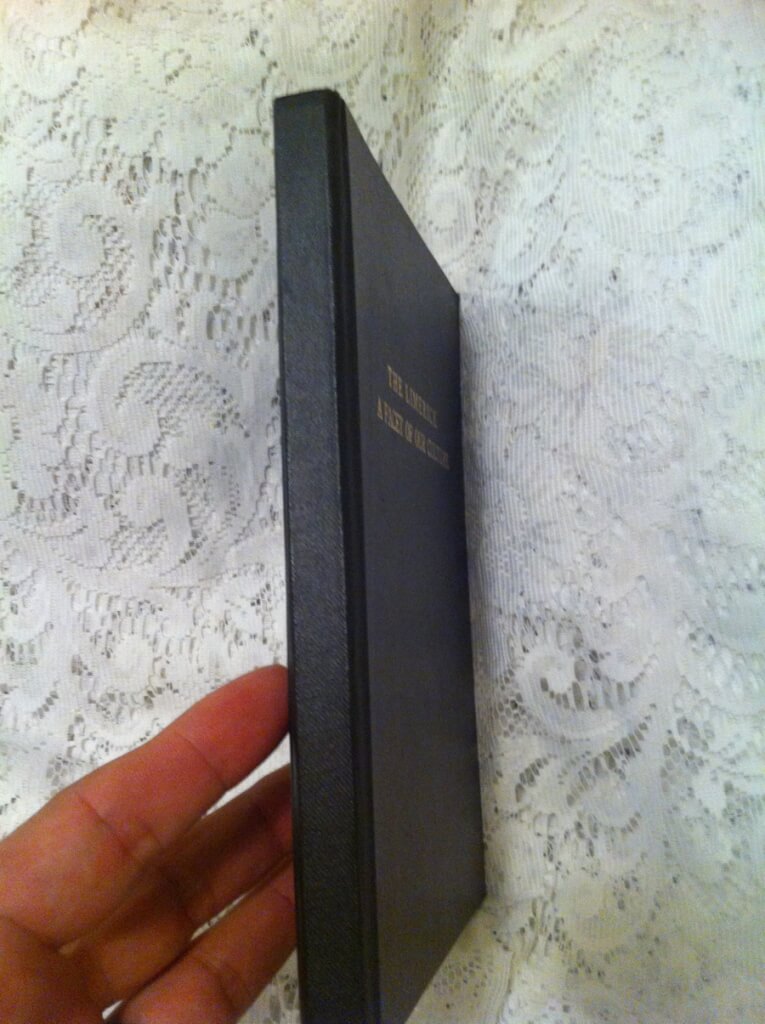
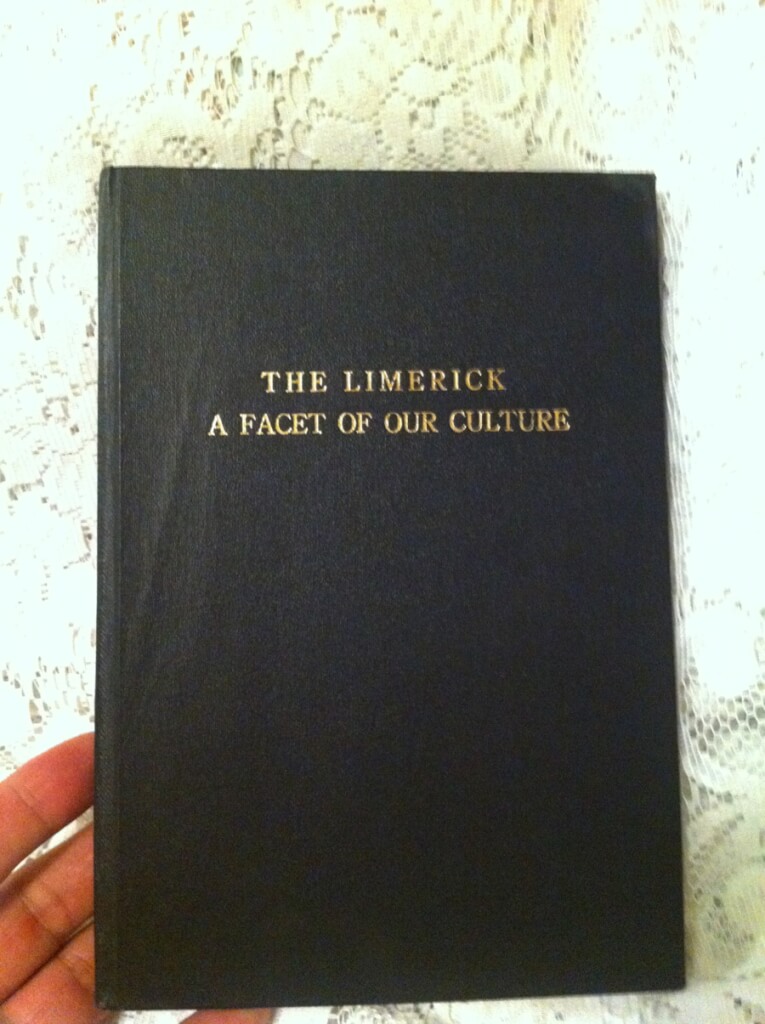 The Limerick, a facet of our culture, anonymous [A. Reynolds Morse] ( Cruciform Press, Mexico City: Privately Printed for Private Circulation to Subscribers Only, 1944 [Cleveland, Ohio: A. Reynolds Morse, 1948.] #208/250) 8" X 5.5", vii+157pp. Hardbound, black cloth boards, gilt lettering on cover. near fine condition (rare for this edition!), slight rust around staples. A. Reynolds Morse was an American, born in 1914, who died in 2000. He moved to Cleveland from Denver in 1941. An industrialist and philanthropist, he is best known for his activity in collecting works by Salvador Dali, and founding the Salvador Dali Museum. According to his obituary in the New York Times, Reynolds and his wife "embarked on a sometimes turbulent friendship with Dali and his wife, Gala". He also had a hobby of collecting and publishing works that other publishers would not print. Title page: "A study of the history and development of the limerick, ensplendor'd with over two hundred examples of the immortal verse form, commentaries, and index" This book is considered by most to be the "dirtiest" collection of limericks. Mr. Morse also published "Folk Poems and Ballads An Anthology". Both books were suppressed by police action in the late 1940's. This is a VERY rare near fine copy of this hard-to-find book. It was poorly made so most of the copies out there have signatures loose.
The Limerick, a facet of our culture, anonymous [A. Reynolds Morse] ( Cruciform Press, Mexico City: Privately Printed for Private Circulation to Subscribers Only, 1944 [Cleveland, Ohio: A. Reynolds Morse, 1948.] #208/250) 8" X 5.5", vii+157pp. Hardbound, black cloth boards, gilt lettering on cover. near fine condition (rare for this edition!), slight rust around staples. A. Reynolds Morse was an American, born in 1914, who died in 2000. He moved to Cleveland from Denver in 1941. An industrialist and philanthropist, he is best known for his activity in collecting works by Salvador Dali, and founding the Salvador Dali Museum. According to his obituary in the New York Times, Reynolds and his wife "embarked on a sometimes turbulent friendship with Dali and his wife, Gala". He also had a hobby of collecting and publishing works that other publishers would not print. Title page: "A study of the history and development of the limerick, ensplendor'd with over two hundred examples of the immortal verse form, commentaries, and index" This book is considered by most to be the "dirtiest" collection of limericks. Mr. Morse also published "Folk Poems and Ballads An Anthology". Both books were suppressed by police action in the late 1940's. This is a VERY rare near fine copy of this hard-to-find book. It was poorly made so most of the copies out there have signatures loose. -
 The Lysistrata of Aristophanes | Wholly translated into English and illustrated with eight full-page drawings by Aubrey Beardsley with a preface on Aristophanic Comedy and its reflection in the art of the Illustrator by George Frederic Lees, Aristophanes, illus. by Aubrey Beardsley, forward by George Frederic Lees (Privately Printed in Paris, 1931, #352/525) 11.25" X 9.25", 61pp, loosely bound with loose cover, with original slip-case, printed on hand-made Van Gelder paper, 8 illustrations printed on mould-made Annoy Paper, interior pages clean and in fine condition, slip-case is in poor condition, some soiling on the cover. Aristophanes was the greatest writer of ancient Athenian “old comedy,” known for its satires of contemporary life and for its broad, often obscene humor. Lysistrata was first produced in 411 BC, when the Peloponnesian War had been devastating Greece for 20 years. Most people know the plot: Lysistrata assembles women from all of Greece, and they agree that they will not have sex until the men make peace. Aubrey Beardsley was the greatest and the most controversial Art Nouveau illustrator in England, famous for his illustrations of Mallory’s Morte d’Arthur, Oscar Wilde’s Salome, Pope’s The Rape of the Lock, and for several magazines. Because he was associated with Oscar Wilde, Beardsley lost his job as art editor of a magazine named The Yellow Book in 1895, soon after Wilde was arrested for homosexuality. He was approached by Leonard Smithers, a publisher of erotic books, who asked him to illustrate Lysistrata. His illustrations are very much in the spirit of Aristophanes, as funny as they are obscene. Beardsley converted to Catholicism in 1897, and soon after, he asked Smithers to “destroy all copies of Lysistrata” with its “obscene drawings,” but Smithers refused. Beardsley died of tuberculosis in 1898, at the age of 26. Smithers initially published Lysistrata in a limited edition of one hundred copies. It was occasionally reprinted in very small runs, usually clandestinely, often poorly, but copies have long been scarce and expensive. I have only found this copy a few places outside of museums and libraries. This is a rare fine reproduction of the original drawings on quality paper. I do not have information about the actual publisher.
The Lysistrata of Aristophanes | Wholly translated into English and illustrated with eight full-page drawings by Aubrey Beardsley with a preface on Aristophanic Comedy and its reflection in the art of the Illustrator by George Frederic Lees, Aristophanes, illus. by Aubrey Beardsley, forward by George Frederic Lees (Privately Printed in Paris, 1931, #352/525) 11.25" X 9.25", 61pp, loosely bound with loose cover, with original slip-case, printed on hand-made Van Gelder paper, 8 illustrations printed on mould-made Annoy Paper, interior pages clean and in fine condition, slip-case is in poor condition, some soiling on the cover. Aristophanes was the greatest writer of ancient Athenian “old comedy,” known for its satires of contemporary life and for its broad, often obscene humor. Lysistrata was first produced in 411 BC, when the Peloponnesian War had been devastating Greece for 20 years. Most people know the plot: Lysistrata assembles women from all of Greece, and they agree that they will not have sex until the men make peace. Aubrey Beardsley was the greatest and the most controversial Art Nouveau illustrator in England, famous for his illustrations of Mallory’s Morte d’Arthur, Oscar Wilde’s Salome, Pope’s The Rape of the Lock, and for several magazines. Because he was associated with Oscar Wilde, Beardsley lost his job as art editor of a magazine named The Yellow Book in 1895, soon after Wilde was arrested for homosexuality. He was approached by Leonard Smithers, a publisher of erotic books, who asked him to illustrate Lysistrata. His illustrations are very much in the spirit of Aristophanes, as funny as they are obscene. Beardsley converted to Catholicism in 1897, and soon after, he asked Smithers to “destroy all copies of Lysistrata” with its “obscene drawings,” but Smithers refused. Beardsley died of tuberculosis in 1898, at the age of 26. Smithers initially published Lysistrata in a limited edition of one hundred copies. It was occasionally reprinted in very small runs, usually clandestinely, often poorly, but copies have long been scarce and expensive. I have only found this copy a few places outside of museums and libraries. This is a rare fine reproduction of the original drawings on quality paper. I do not have information about the actual publisher. -
 Manual of Classical Erotology (de figuris Veneris) by Fred. Chas. Forberg, trans. Alcide Bonneau (Privately Printed for Viscount Julian Smithson M. A. and Friends [Charles Carrington], 1884, one of 100 copies) vol. 2 only, half-bound in tan vellum over marbled boards, spine is labeled "Carrington" who is the presumed publisher. Top edge gilt, other edges deckled, binding loose but holding. De figuris Veneris (On the figures of Venus) was an anthology of ancient Greek and ancient Roman writings on erotic topics, discussed objectively and classified and grouped by subject matter. It was first published by the German classicist Friedrich Karl Forberg in 1824 in Latin and Greek as a commentary to Antonio Beccadelli's (1394-1471) Hermaphroditus (commonly referred to as Antonii Panormitae Hermaphroditus), an erotic poem sequence of 1425 in renaissance Latin, though it was later also published as a separate work. First edition of this important parallel English, Latin and Greek version. This very rare edition was translated by Alcide Bonneau and published by Charles Carrington. Each page has latin (and where appropriate, Greek) on the right side and the English translation on the left. This is the second volume only and includes the following chapters: IV. —Of Masturbation V. —Of Cunnilingues VI. —Of Tribads VII. —Of Intercourse with Animals VIII. —Of Spintrian Postures (a list of 95 sexual positions) Considered the gold standard English translation of the time, this edition followed a poor piracy of 1882 badly translated from Liseux’s French edition of 1882. The name of the publisher is missing (most likely to avoid prosecution) and the limitation statement says 100 copies were "printed for Viscount Julian Smithson M. A., the Translator, and his Friends" and further states that "None of these Copies are for Sale" (also to avoid prosecution). Through later statements (mostly by association) we know it was published by Charles Carrington and translated by Alcide Bonneau. Carrington, in his 1902 catalogue, Forbidden Books wrote (thus promoting the sale of his clandestinely published book): ‘Were I a bookseller, I do not think I should ever take the trouble to print such a book as I have now before me. Here is a Latin work, full of notes, and bristling with Greek quotations. A most careful and masterly translation has been placed opposite every page of the original text, and it needs no literary critic to see that no one but a real classical scholar—an old Oxford man—could ever have successfully struggled with such a task... The two stout volumes have evidently been printed on the Continent—and for very good and valid reasons, as no English printer would dare to undertake such a work,— therefore each page would have to be submitted to the translator, at least three or four times, foreign compositors working mechanically. Many months would thus pass in wearisome proof-reading, and when at last the hundred copies are struck off, and each man receives his due, what margin of profit awaits the silly bookseller-publisher? He is insulted in every way and laughed at if he dares to wonder that the British Customs seize any copies...’ In 1882 Forberg's work was translated into English and published by Charles Carrington as De figuris Veneris, Manual of classical erotology, and again in 1907 by Charles Hirsch, and into French, German and Spanish. The French edition by Alcide Bonneau was titled Manuel d’érotologie classique. One French edition of 1906 was illustrated by Édouard-Henri Avril, which concludes with a list of 95 sexual positions. Most of the editions were restricted to high society or censored; one of the copies edited in France was immediately deposited on the secret shelves of the Bibliothèque nationale de France.
Manual of Classical Erotology (de figuris Veneris) by Fred. Chas. Forberg, trans. Alcide Bonneau (Privately Printed for Viscount Julian Smithson M. A. and Friends [Charles Carrington], 1884, one of 100 copies) vol. 2 only, half-bound in tan vellum over marbled boards, spine is labeled "Carrington" who is the presumed publisher. Top edge gilt, other edges deckled, binding loose but holding. De figuris Veneris (On the figures of Venus) was an anthology of ancient Greek and ancient Roman writings on erotic topics, discussed objectively and classified and grouped by subject matter. It was first published by the German classicist Friedrich Karl Forberg in 1824 in Latin and Greek as a commentary to Antonio Beccadelli's (1394-1471) Hermaphroditus (commonly referred to as Antonii Panormitae Hermaphroditus), an erotic poem sequence of 1425 in renaissance Latin, though it was later also published as a separate work. First edition of this important parallel English, Latin and Greek version. This very rare edition was translated by Alcide Bonneau and published by Charles Carrington. Each page has latin (and where appropriate, Greek) on the right side and the English translation on the left. This is the second volume only and includes the following chapters: IV. —Of Masturbation V. —Of Cunnilingues VI. —Of Tribads VII. —Of Intercourse with Animals VIII. —Of Spintrian Postures (a list of 95 sexual positions) Considered the gold standard English translation of the time, this edition followed a poor piracy of 1882 badly translated from Liseux’s French edition of 1882. The name of the publisher is missing (most likely to avoid prosecution) and the limitation statement says 100 copies were "printed for Viscount Julian Smithson M. A., the Translator, and his Friends" and further states that "None of these Copies are for Sale" (also to avoid prosecution). Through later statements (mostly by association) we know it was published by Charles Carrington and translated by Alcide Bonneau. Carrington, in his 1902 catalogue, Forbidden Books wrote (thus promoting the sale of his clandestinely published book): ‘Were I a bookseller, I do not think I should ever take the trouble to print such a book as I have now before me. Here is a Latin work, full of notes, and bristling with Greek quotations. A most careful and masterly translation has been placed opposite every page of the original text, and it needs no literary critic to see that no one but a real classical scholar—an old Oxford man—could ever have successfully struggled with such a task... The two stout volumes have evidently been printed on the Continent—and for very good and valid reasons, as no English printer would dare to undertake such a work,— therefore each page would have to be submitted to the translator, at least three or four times, foreign compositors working mechanically. Many months would thus pass in wearisome proof-reading, and when at last the hundred copies are struck off, and each man receives his due, what margin of profit awaits the silly bookseller-publisher? He is insulted in every way and laughed at if he dares to wonder that the British Customs seize any copies...’ In 1882 Forberg's work was translated into English and published by Charles Carrington as De figuris Veneris, Manual of classical erotology, and again in 1907 by Charles Hirsch, and into French, German and Spanish. The French edition by Alcide Bonneau was titled Manuel d’érotologie classique. One French edition of 1906 was illustrated by Édouard-Henri Avril, which concludes with a list of 95 sexual positions. Most of the editions were restricted to high society or censored; one of the copies edited in France was immediately deposited on the secret shelves of the Bibliothèque nationale de France. -
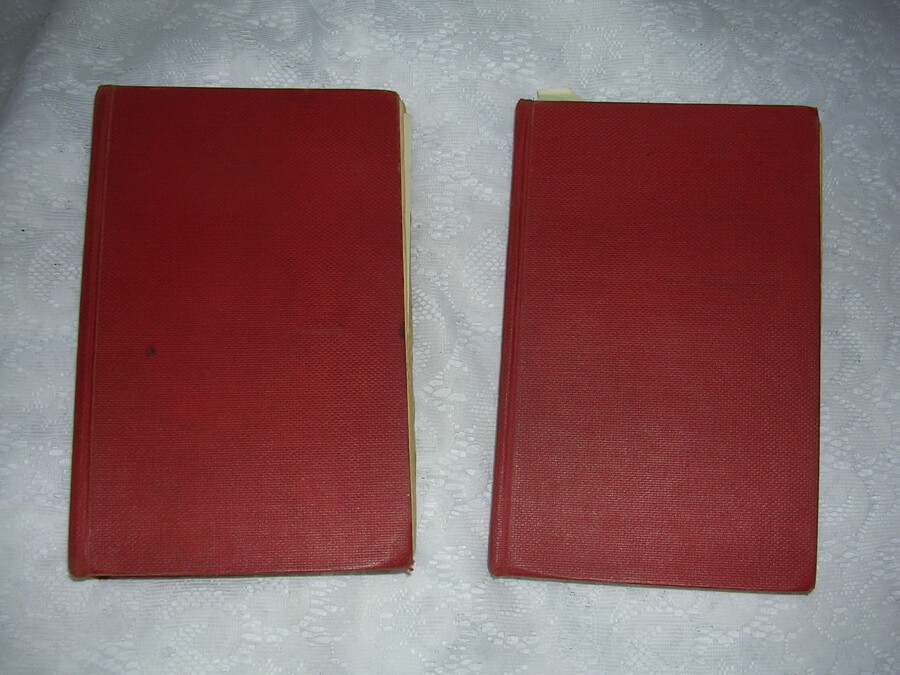
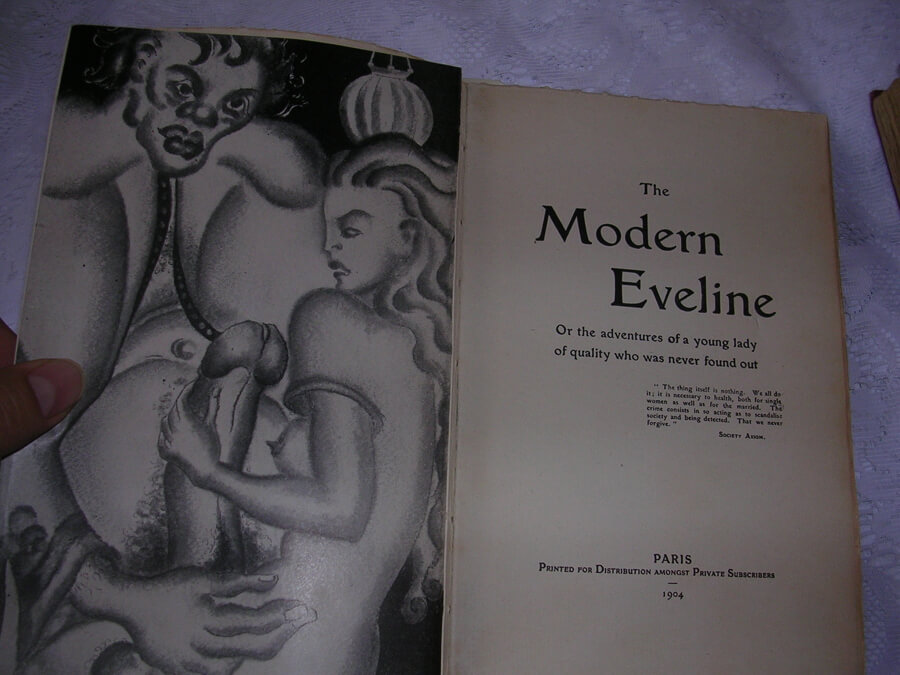 The Modern Eveline; or the adventures of a young lady of quality who was never found out (2 volumes), anonymous (Printed for Distribution Amongst Private Subscribers, Paris, 1904 [Miller Brothers, New York, c. 1930]) 9 1/8" X 6 7/8", 2 vol. 322pp 222pp, hardbound no DJ, plain blank red cloth boards and spine, deckle edges, fair condition, boards almost separated in volume one, boards loose in volume 2 but attached, frontispiece unattached. First American Edition. Turn of the 20th century erotic adaptation by notorious publisher Charles Carrington of a ca.1840 galante novel, Evelina, that, according to Mendes, was explicitly sexed-up by one of Carrington's staff hacks. This edition, containing the full text to the Carrington three-volume edition, was issued in the early 1930s by the Miller Brothers who were part of New York City's clandestine erotica scene along with Sam Roth, Esar Levine, and Ben Rebhuhn. Very graphic and explicite illustrations from an anonymous 1930's artist.
The Modern Eveline; or the adventures of a young lady of quality who was never found out (2 volumes), anonymous (Printed for Distribution Amongst Private Subscribers, Paris, 1904 [Miller Brothers, New York, c. 1930]) 9 1/8" X 6 7/8", 2 vol. 322pp 222pp, hardbound no DJ, plain blank red cloth boards and spine, deckle edges, fair condition, boards almost separated in volume one, boards loose in volume 2 but attached, frontispiece unattached. First American Edition. Turn of the 20th century erotic adaptation by notorious publisher Charles Carrington of a ca.1840 galante novel, Evelina, that, according to Mendes, was explicitly sexed-up by one of Carrington's staff hacks. This edition, containing the full text to the Carrington three-volume edition, was issued in the early 1930s by the Miller Brothers who were part of New York City's clandestine erotica scene along with Sam Roth, Esar Levine, and Ben Rebhuhn. Very graphic and explicite illustrations from an anonymous 1930's artist. -

 The Old Man Young Again, or Age-Rejuvenescence in the Power of Concupiscence, [Ibn-I Kemal Pasa] "literally translated from the arabic by an English Bohemian" (Charles Carrington, Paris, 1898 [first edition]) 9" X 5.5", xi 265pp, original soft covers, unread copy (most pages uncut on top, some uncut fore edge). Protective wraps. A very rare translation of an arabic how-to sex manual with much emphasis on aphrodisiacs with a forward by Carrington. Very few copies of this Carrington publication still exist. This is particularly unique because many pages remain uncut. I know of no other copies in this unread condition!
The Old Man Young Again, or Age-Rejuvenescence in the Power of Concupiscence, [Ibn-I Kemal Pasa] "literally translated from the arabic by an English Bohemian" (Charles Carrington, Paris, 1898 [first edition]) 9" X 5.5", xi 265pp, original soft covers, unread copy (most pages uncut on top, some uncut fore edge). Protective wraps. A very rare translation of an arabic how-to sex manual with much emphasis on aphrodisiacs with a forward by Carrington. Very few copies of this Carrington publication still exist. This is particularly unique because many pages remain uncut. I know of no other copies in this unread condition! -

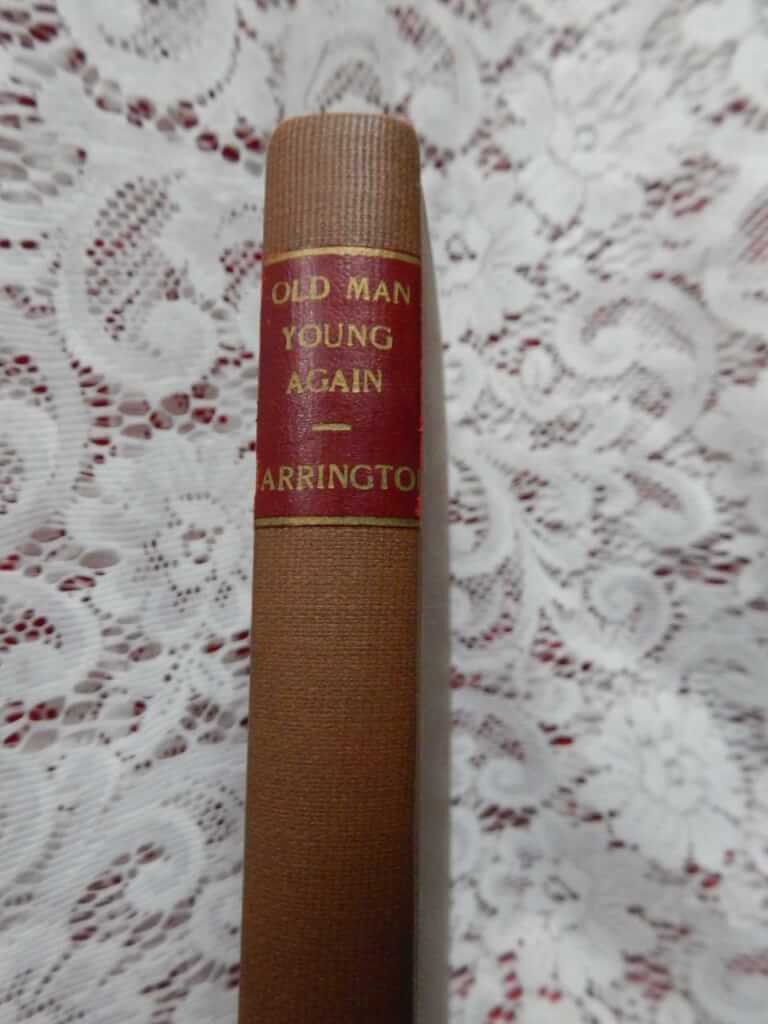 The Old Man Young Again, or Age-Rejuvenescence in the Power of Concupiscence, [Ibn-I Kemal Pasa] "literally translated from the arabic by an English Bohemian" (Charles Carrington, Paris, 1898 [first edition]) 5.25"x8.5", xi 265pp, hard bound in brown boards with gilt titles over red on spine, pages uniformly yellowed, good condition for age, binding good A very rare translation of an arabic how-to sex manual with much emphasis on aphrodisiacs with a forward by Carrington. Very few copies of this Carrington publication still exist.
The Old Man Young Again, or Age-Rejuvenescence in the Power of Concupiscence, [Ibn-I Kemal Pasa] "literally translated from the arabic by an English Bohemian" (Charles Carrington, Paris, 1898 [first edition]) 5.25"x8.5", xi 265pp, hard bound in brown boards with gilt titles over red on spine, pages uniformly yellowed, good condition for age, binding good A very rare translation of an arabic how-to sex manual with much emphasis on aphrodisiacs with a forward by Carrington. Very few copies of this Carrington publication still exist. -
 The Romance of Chastisement; or Revelations of the School and Bedroom | by and expert, anonymous (Tremont Publishing Company, Boston, 1876) 8" X 5.5", 150pp, green boards with blindstamp decorations, gilt titles on the spine, red inked edges, just good condition, bumping and chipping on corners and spine, red frame decoration throughout book. The Romance of Chastisement is a Victorian pornographic collection on the theme of flagellation by St George Stock (a probable pseudonym, also credited with The Whippingham Papers). It was originally published by John Camden Hotten in 1866. It was reprinted by William Lazenby in 1883 and again by Charles Carrington in 1902 as The Magnetism of the Rod or the Revelations of Miss Darcy. This is the rare edition published in Boston, USA.
The Romance of Chastisement; or Revelations of the School and Bedroom | by and expert, anonymous (Tremont Publishing Company, Boston, 1876) 8" X 5.5", 150pp, green boards with blindstamp decorations, gilt titles on the spine, red inked edges, just good condition, bumping and chipping on corners and spine, red frame decoration throughout book. The Romance of Chastisement is a Victorian pornographic collection on the theme of flagellation by St George Stock (a probable pseudonym, also credited with The Whippingham Papers). It was originally published by John Camden Hotten in 1866. It was reprinted by William Lazenby in 1883 and again by Charles Carrington in 1902 as The Magnetism of the Rod or the Revelations of Miss Darcy. This is the rare edition published in Boston, USA. -
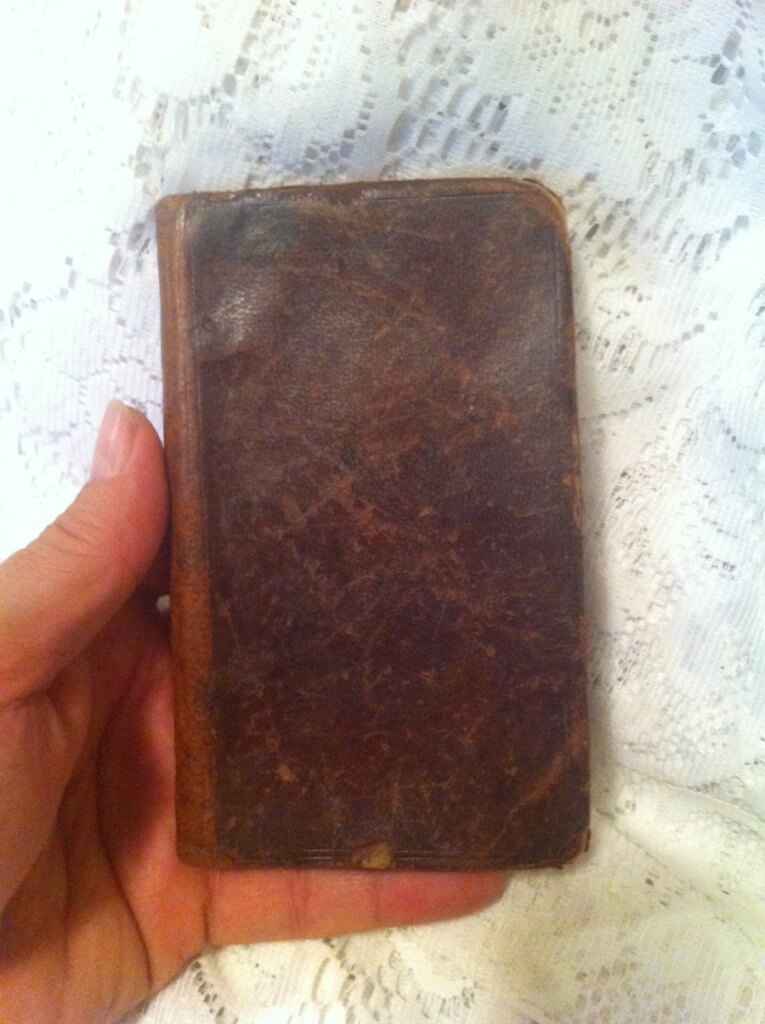
 The secret history of the most renowned Q. Elizabeth and the E. of Essex, "By a Person of Quality", ("Printed for R. Wellington, at the Dolphin and Crown in St. Paul's Churchyard, 1708. Where you may be furnish'd with all sorts of Plays.") 3.25"x5.5", in two parts with separate title pages 1-62,63-112pp(of 115?), bound in brown leather, no front or rear endpapers, not illustrated, poor condition, binding and boards are solid but pages soiled and edges tattered, page 111/112 piece torn off, pages 113-155 missing, writing (alphabet letters) near and on part one title page. By the late seventeenth century, Elizabeth's love life became a subject of obsession in England and especially in France. This book is the most famous of the absurd tattle-tale books. It was a translation of Comte d'Essex histoire angloise first published in 1678 by Claude Barbin – a Parisian publisher who edited the works of Molière, La Fontaine, Charles Perrault and Corneille. The earliest translations to english date show up around 1680. Most of them have a false imprint of "Cologne : Printed for Will with the Wisp". Few are seen with this particular imprint. The story was turned into a play and in 1912 adapted as a silent film entitled Les Amours de la reine Élisabeth starring Sarah Bernhardt as Elizabeth.
The secret history of the most renowned Q. Elizabeth and the E. of Essex, "By a Person of Quality", ("Printed for R. Wellington, at the Dolphin and Crown in St. Paul's Churchyard, 1708. Where you may be furnish'd with all sorts of Plays.") 3.25"x5.5", in two parts with separate title pages 1-62,63-112pp(of 115?), bound in brown leather, no front or rear endpapers, not illustrated, poor condition, binding and boards are solid but pages soiled and edges tattered, page 111/112 piece torn off, pages 113-155 missing, writing (alphabet letters) near and on part one title page. By the late seventeenth century, Elizabeth's love life became a subject of obsession in England and especially in France. This book is the most famous of the absurd tattle-tale books. It was a translation of Comte d'Essex histoire angloise first published in 1678 by Claude Barbin – a Parisian publisher who edited the works of Molière, La Fontaine, Charles Perrault and Corneille. The earliest translations to english date show up around 1680. Most of them have a false imprint of "Cologne : Printed for Will with the Wisp". Few are seen with this particular imprint. The story was turned into a play and in 1912 adapted as a silent film entitled Les Amours de la reine Élisabeth starring Sarah Bernhardt as Elizabeth. -
 Your Sex Life | Before Marriage, Bob Hoffman (Strength & Health Publishing Co.,York, PA, 1939, first edition, third printing) 7.75" X 5.75", 206pp, hard bound blue cloth, just good condition, rubbing to boards, internal pages yellowing but good. Robert Collins Hoffman (1898 - 1985) was an American entrepreneur who rose to prominence as the owner of York Barbell. He founded magazines such as Muscular Development and Strength & Health, and was the manufacturer of a line of bodybuilding supplements. Hoffman promoted bodybuilders like John Grimek and Sigmund Klein, coached the American Olympic Weightlifting Team between 1936 and 1968, and was a founding member of the President's Council on Physical Fitness and Sports. This is a very rare copy of Hoffman book about premarital sex.
Your Sex Life | Before Marriage, Bob Hoffman (Strength & Health Publishing Co.,York, PA, 1939, first edition, third printing) 7.75" X 5.75", 206pp, hard bound blue cloth, just good condition, rubbing to boards, internal pages yellowing but good. Robert Collins Hoffman (1898 - 1985) was an American entrepreneur who rose to prominence as the owner of York Barbell. He founded magazines such as Muscular Development and Strength & Health, and was the manufacturer of a line of bodybuilding supplements. Hoffman promoted bodybuilders like John Grimek and Sigmund Klein, coached the American Olympic Weightlifting Team between 1936 and 1968, and was a founding member of the President's Council on Physical Fitness and Sports. This is a very rare copy of Hoffman book about premarital sex.
